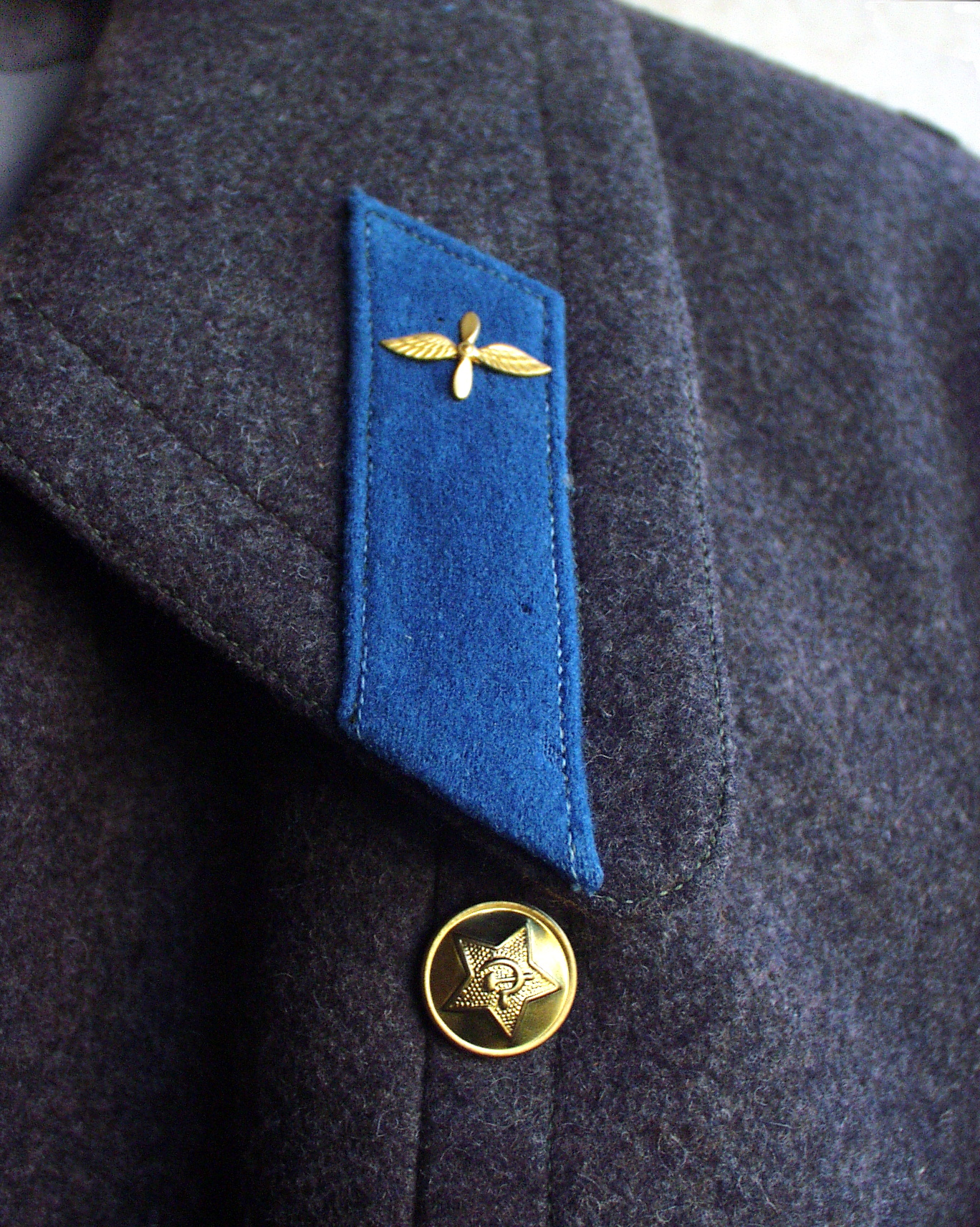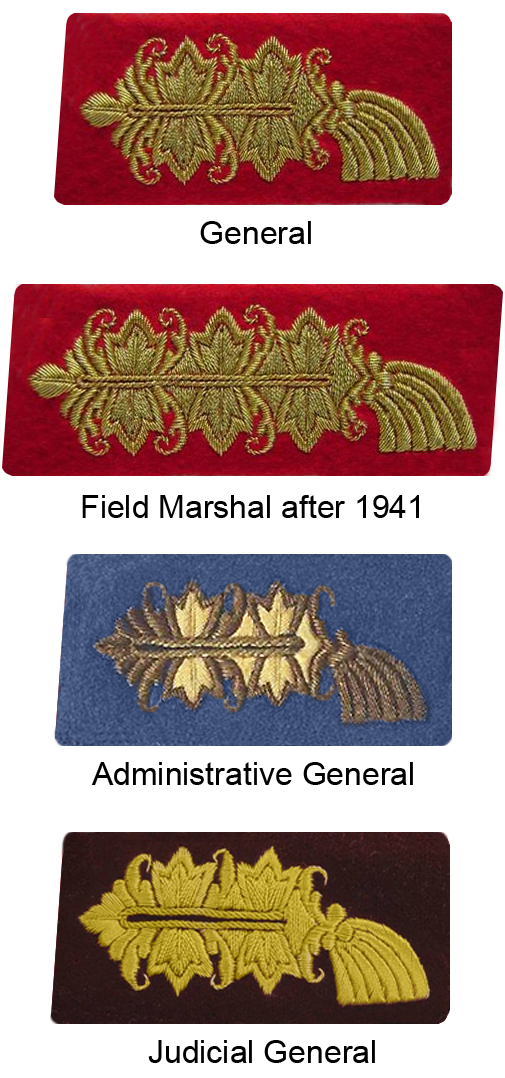|
Waffenfarbe
In the German military, ''Waffenfarbe'' (German: "branch-of-service colors" or "corps colors") is a visual method that the armed forces use to distinguish between different corps or troop functions in its armed services. The ''Waffenfarbe'' itself can take the form of the color of the collar patch, of the piping (embellishment) around the shoulder boards or shoulder marks, or—for enlisted ranks—of the piping around the collar and the garrison cap (''Schiffchen''). (In the latter places, NCOs wear cords of dark gold, officers silver, and generals gold.)Official brochure on Bundeswehr uniforms (in German) (''Waffenfarben'' of the army p. 14, of the air force p. 17) Present
|
German Army (Wehrmacht)
The German Army (, "army") is the land component of the armed forces of Federal Republic of Germany, Germany. The present-day German Army was founded in 1955 as part of the newly formed West German ''Bundeswehr'' together with the German Navy, ''Marine'' (German Navy) and the German Air Force, ''Luftwaffe'' (German Air Force). , the German Army had a strength of 62,766 soldiers. History Overview A German army equipped, organized, and trained following a single doctrine and permanently unified under one command in 1871 during the unification of Germany under the leadership of Prussia. From 1871 to 1919, the title ''German Army (German Empire), Deutsches Heer'' (German Army) was the official name of the German land forces. Following the German defeat in World War I and the end of the German Empire, the main army was dissolved. From 1921 to 1935 the name of the German land forces was the ''Reichswehr, Reichsheer'' (Army of the Empire) and from 1935 to 1945 the name ''German Army (We ... [...More Info...] [...Related Items...] OR: [Wikipedia] [Google] [Baidu] |
Gorget Patches
Gorget patches (collar tabs, collar patches) are an insignia in the form of paired patches of cloth or metal on the collar of a uniform (gorget), used in the military and civil service in some countries. Collar tabs sign the military rank (group of ranks), the rank of civil service, the military unit, the office (department) or the branch of the armed forces and the arm of service. History Gorget patches were originally gorgets, pieces of armour worn to protect the throat. With the disuse of armour, gorgets were relegated to decorative use. The cloth patch on the collar however evolved from contrasting cloth used to reinforce the buttonholes at the collar of a uniform coat. (This is perhaps most evident in the traditional Commonwealth design for Colonels, which has a button and a narrow line of darker piping where the slit buttonhole would have been.) In the British Empire the patches were introduced as insignia during the South African War (1889-1902). They have been used ever ... [...More Info...] [...Related Items...] OR: [Wikipedia] [Google] [Baidu] |
Gorget Patch
Gorget patches (collar tabs, collar patches) are an insignia in the form of paired patches of cloth or metal on the collar of a uniform (gorget), used in the military and civil service in some countries. Collar tabs sign the military rank (group of ranks), the rank of civil service, the military unit, the office (department) or the branch of the armed forces and the arm of service. History Gorget patches were originally gorgets, pieces of armour worn to protect the throat. With the disuse of armour, gorgets were relegated to decorative use. The cloth patch on the collar however evolved from contrasting cloth used to reinforce the buttonholes at the collar of a uniform coat. (This is perhaps most evident in the traditional Commonwealth design for Colonels, which has a button and a narrow line of darker piping where the slit buttonhole would have been.) In the British Empire the patches were introduced as insignia during the South African War (1889-1902). They have been used ever si ... [...More Info...] [...Related Items...] OR: [Wikipedia] [Google] [Baidu] |
Transport
Transport (in British English), or transportation (in American English), is the intentional movement of humans, animals, and goods from one location to another. Modes of transport include air, land (rail and road), water, cable, pipeline, and space. The field can be divided into infrastructure, vehicles, and operations. Transport enables human trade, which is essential for the development of civilizations. Transport infrastructure consists of both fixed installations, including roads, railways, airways, waterways, canals, and pipelines, and terminals such as airports, railway stations, bus stations, warehouses, trucking terminals, refueling depots (including fueling docks and fuel stations), and seaports. Terminals may be used both for interchange of passengers and cargo and for maintenance. Means of transport are any of the different kinds of transport facilities used to carry people or cargo. They may include vehicles, riding animals, and pack animals. Vehicles may incl ... [...More Info...] [...Related Items...] OR: [Wikipedia] [Google] [Baidu] |
Jäger (military)
Jäger, Jager, or Jaeger (), meaning "hunter" in German, may refer to: *Jäger (surname), shared by many people Fictional characters * Frank Jaeger, better known as Gray Fox, in the ''Metal Gear'' series * Eren Jaeger, or Eren Yeager, protagonist in the ''Attack on Titan'' manga and anime * Felix Jaeger, in the ''Gotrek and Felix'' series *Gen. Radi Jaeger, a villain in the video game ''Valkyria Chronicles'' - see List of ''Valkyria Chronicles'' characters *Jaeger, a member of the Teknos faction in the video game '' The Unholy War'' *Jaeger, in the television series ''Altered Carbon'' *Jaeger, a group of vampire hunters in the anime series ''Sirius the Jaeger'' *Jaegers, a group in the ''Akame ga Kill!'' manga and anime *Jaegers, piloted robots used to fight alien monsters in the 2013 film ''Pacific Rim'' and the 2018 sequel *Jäger, a member of the GSG-9 in the video game ''Rainbow Six Siege'' In biology *Jaeger, the North American name for the smaller species of the skua fami ... [...More Info...] [...Related Items...] OR: [Wikipedia] [Google] [Baidu] |
Cavalry
Historically, cavalry (from the French word ''cavalerie'', itself derived from "cheval" meaning "horse") are soldiers or warriors who fight mounted on horseback. Cavalry were the most mobile of the combat arms, operating as light cavalry in the roles of reconnaissance, screening, and skirmishing in many armies, or as heavy cavalry for decisive shock attacks in other armies. An individual soldier in the cavalry is known by a number of designations depending on era and tactics, such as cavalryman, horseman, trooper, cataphract, knight, hussar, uhlan, mamluk, cuirassier, lancer, dragoon, or horse archer. The designation of ''cavalry'' was not usually given to any military forces that used other animals for mounts, such as camels or elephants. Infantry who moved on horseback, but dismounted to fight on foot, were known in the early 17th to the early 18th century as '' dragoons'', a class of mounted infantry which in most armies later evolved into standard cavalry while ... [...More Info...] [...Related Items...] OR: [Wikipedia] [Google] [Baidu] |
Military Communications
Military communications or military signals involve all aspects of communications, or conveyance of information, by armed forces. Military communications span from pre-history to the present. The earliest military communications were delivered by runners. Later, communications progressed to visual and audible signals, and then advanced into the electronic age. Examples from ''Jane's Military Communications'' include text, audio, facsimile, tactical ground-based communications, naval signalling, terrestrial microwave, tropospheric scatter, satellite communications systems and equipment, surveillance and signal analysis, security, direction finding and jamming.IHS Jane'sMilitary Communications Retrieved 2012-01-23. History In past centuries communicating a message usually required someone to go to the destination, bringing the message. Thus, the term ''communication'' often implied the ability to transport people and supplies. A place under siege was one that lost communicat ... [...More Info...] [...Related Items...] OR: [Wikipedia] [Google] [Baidu] |





